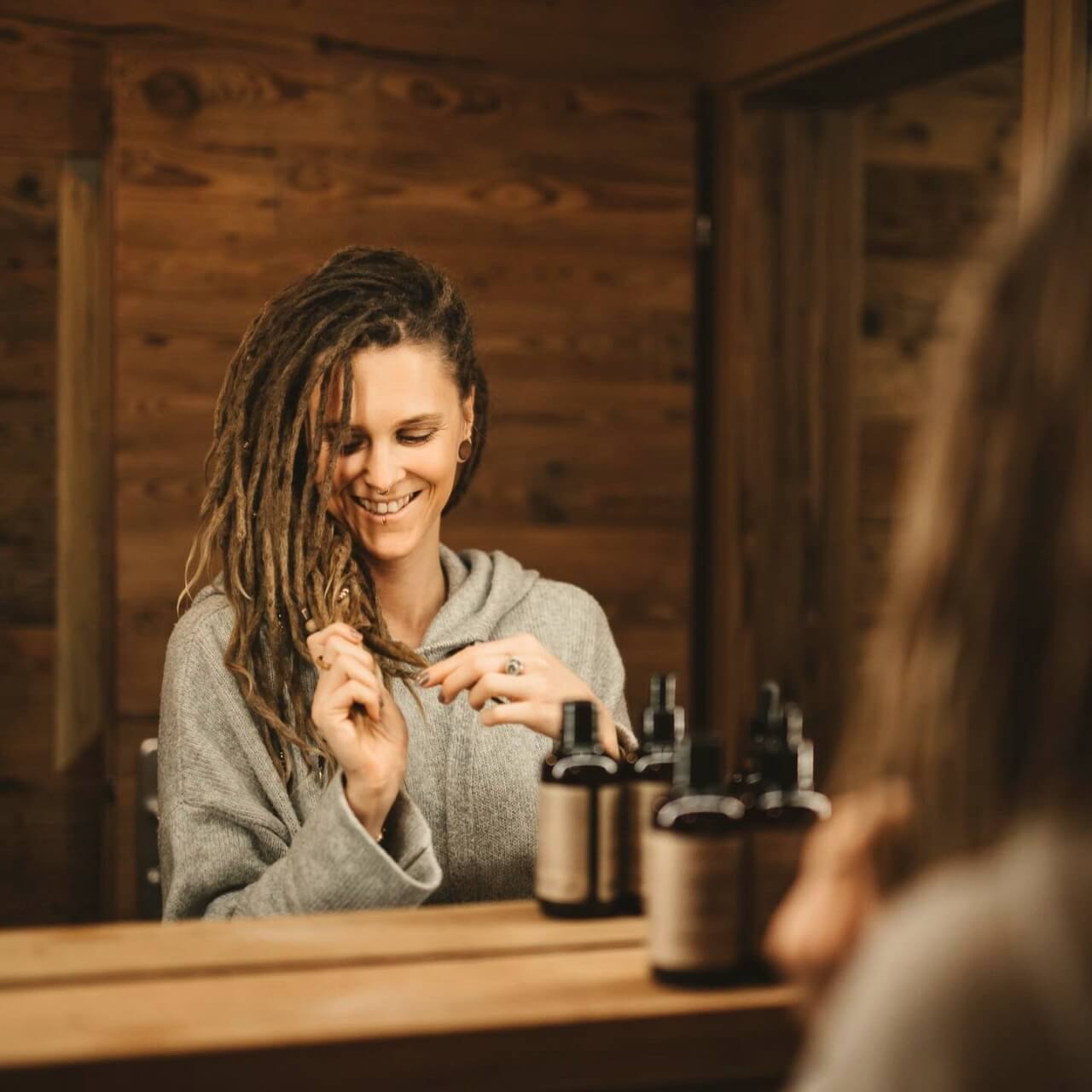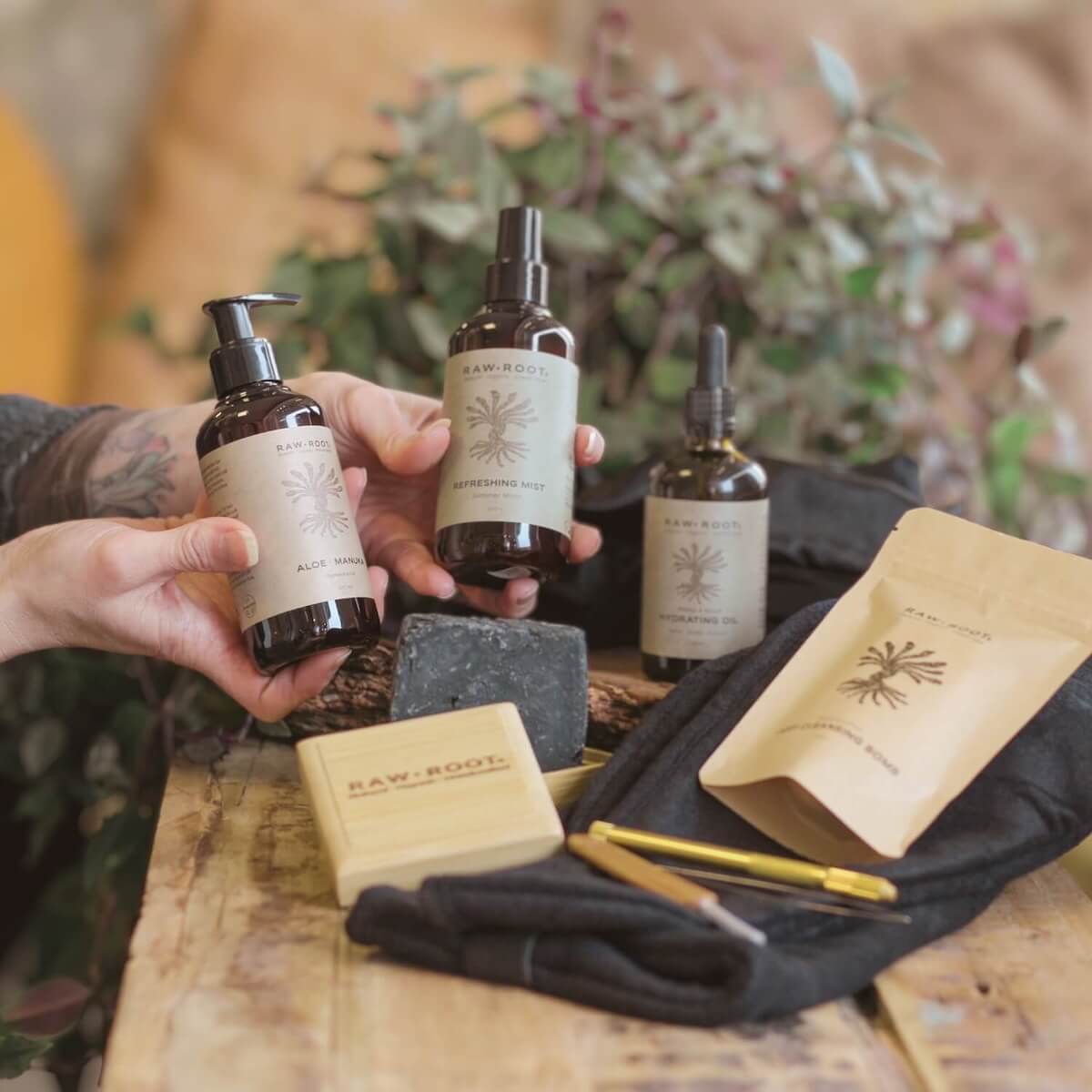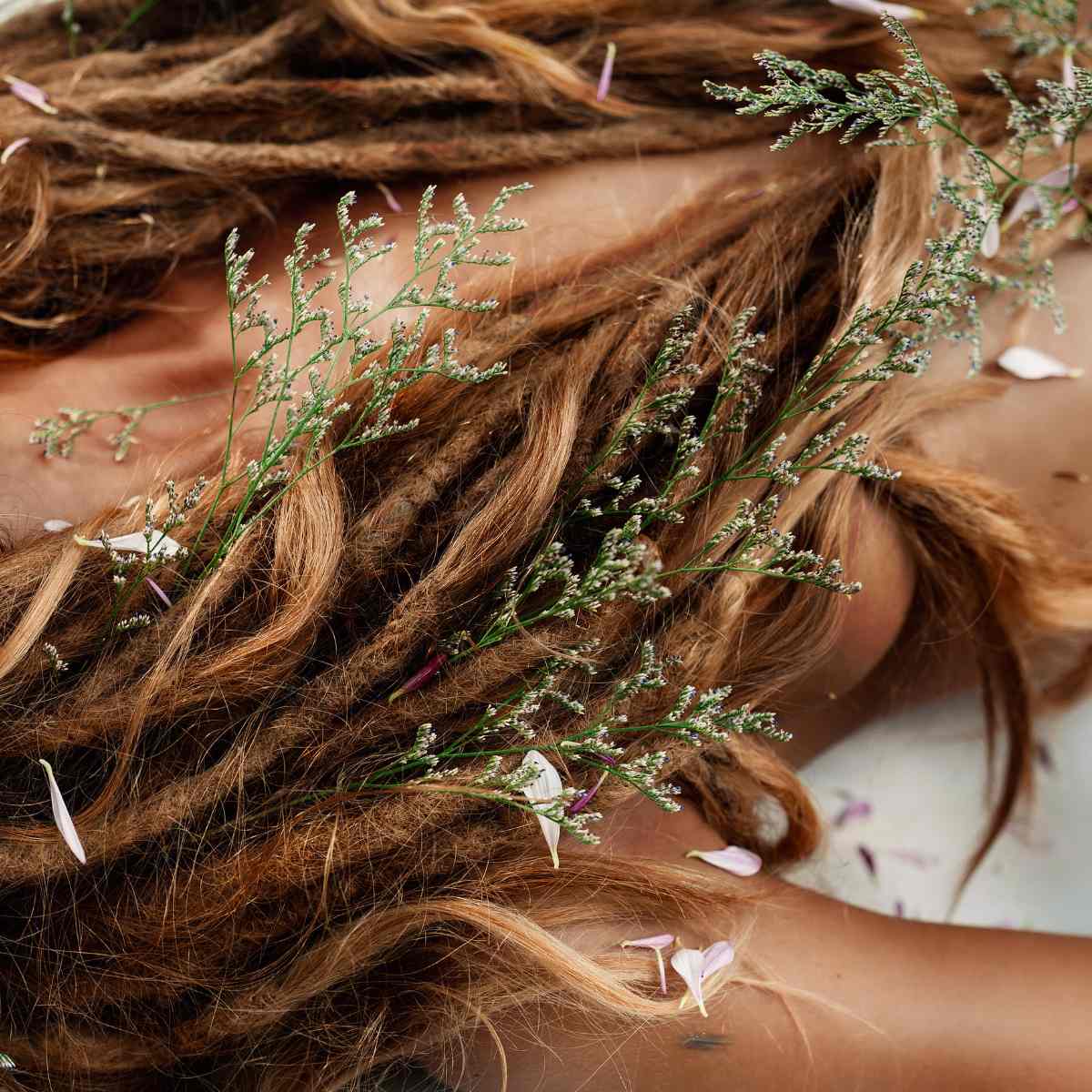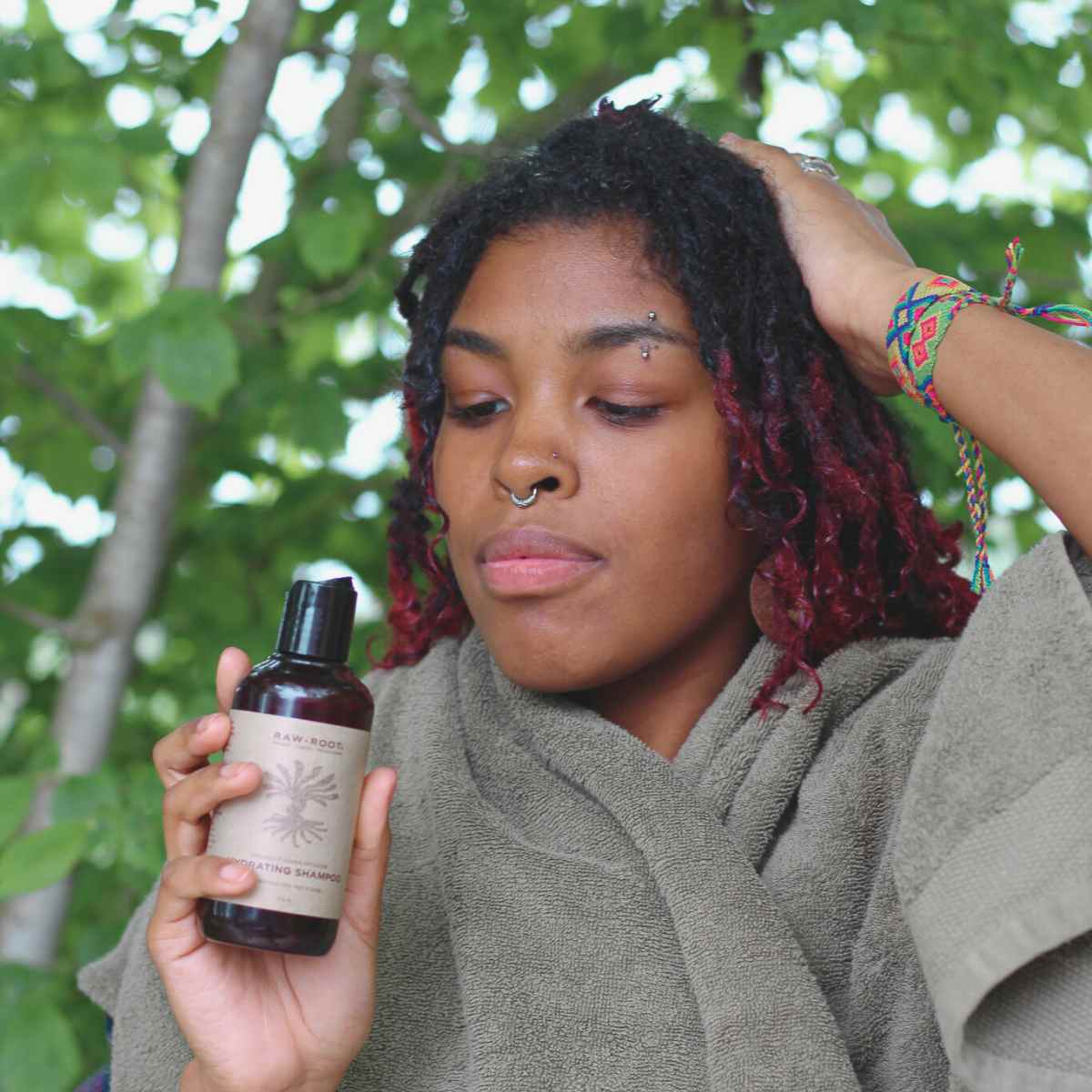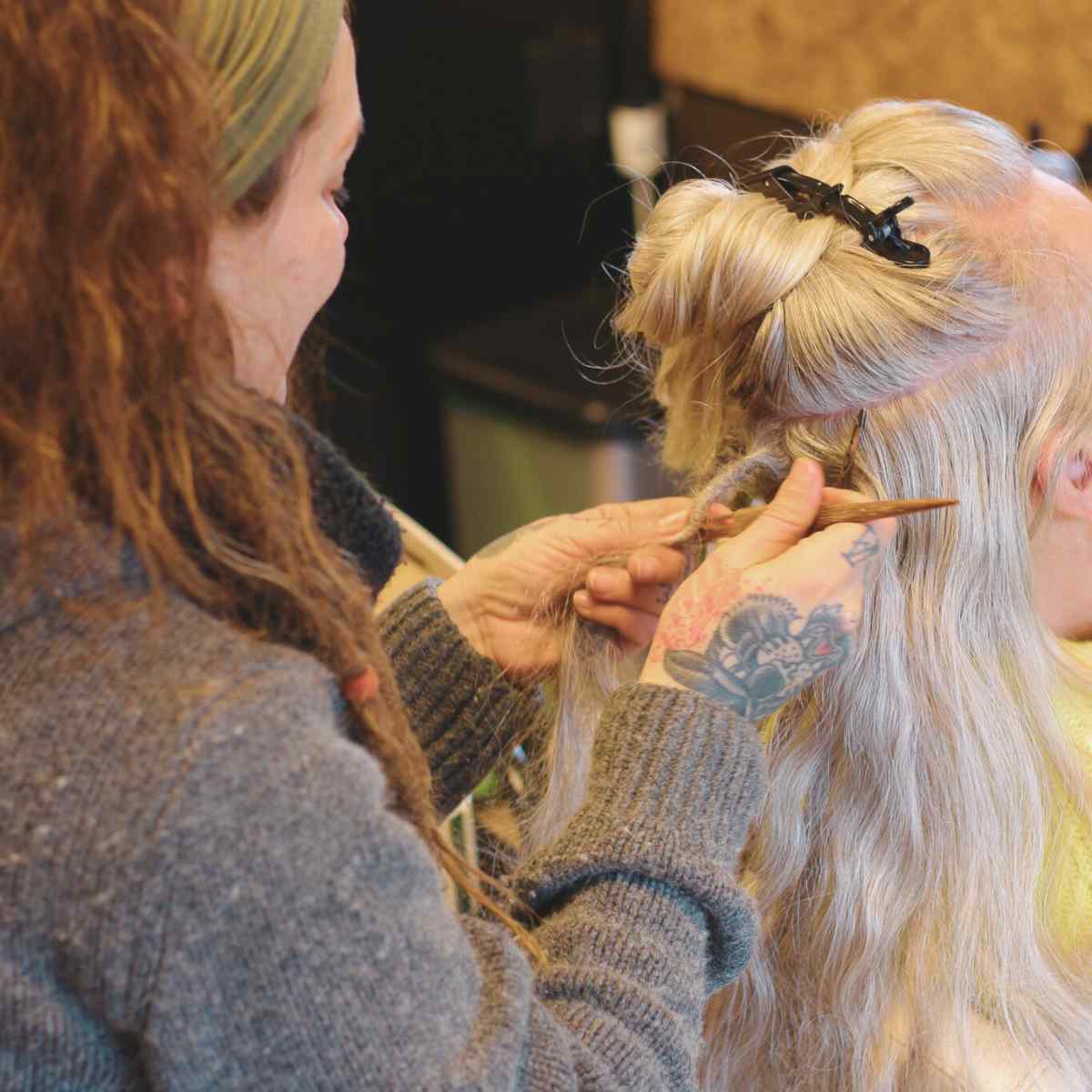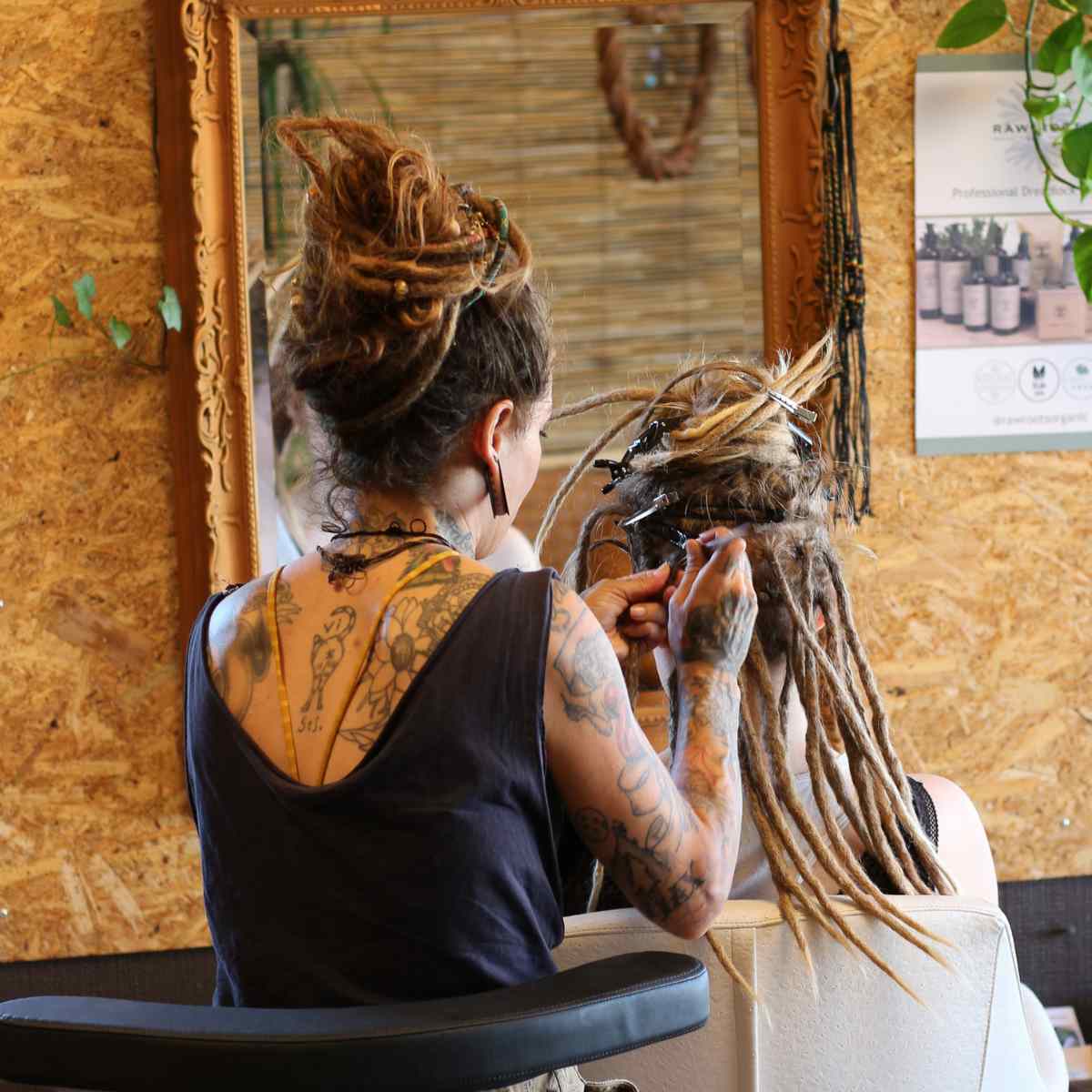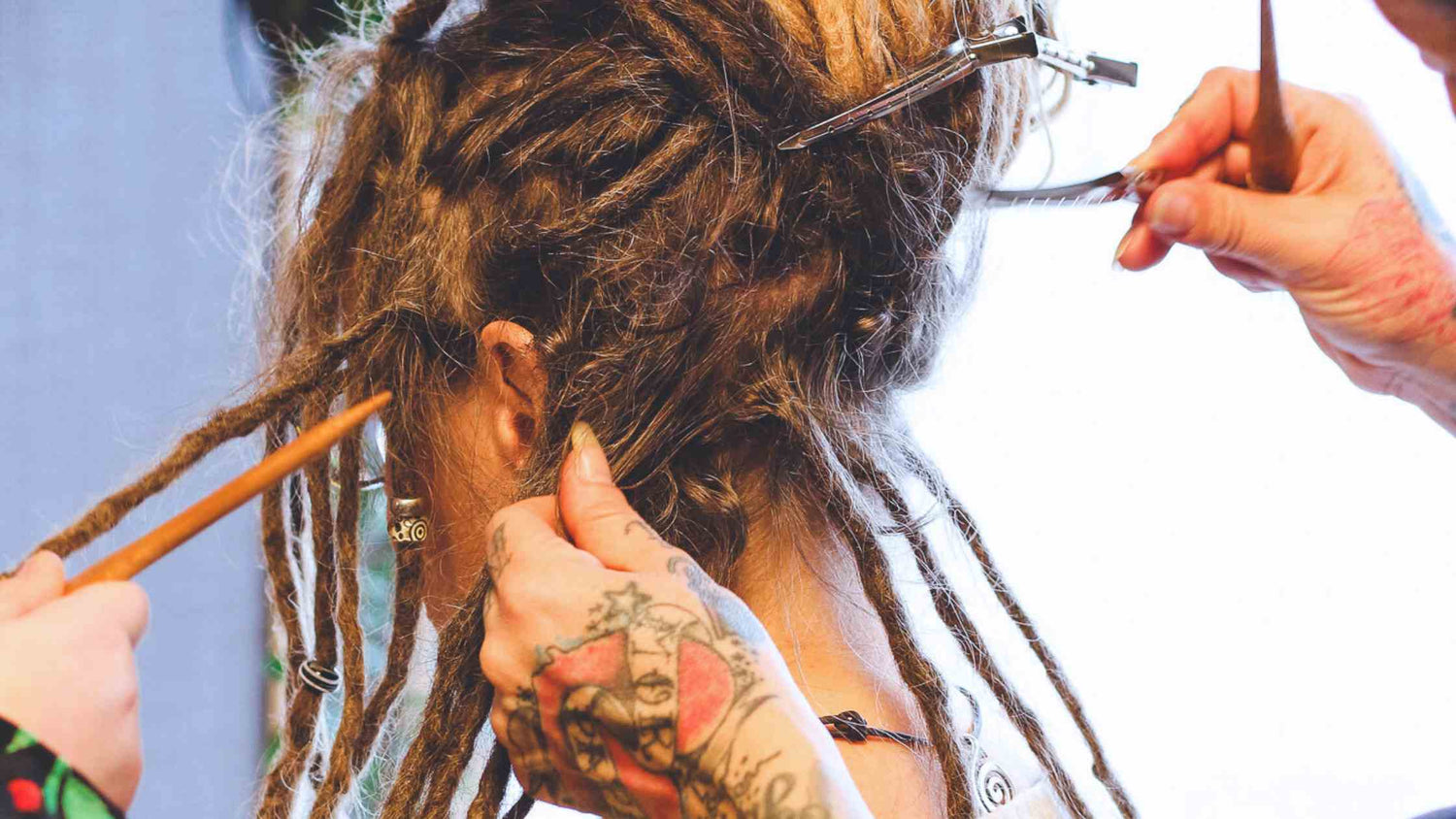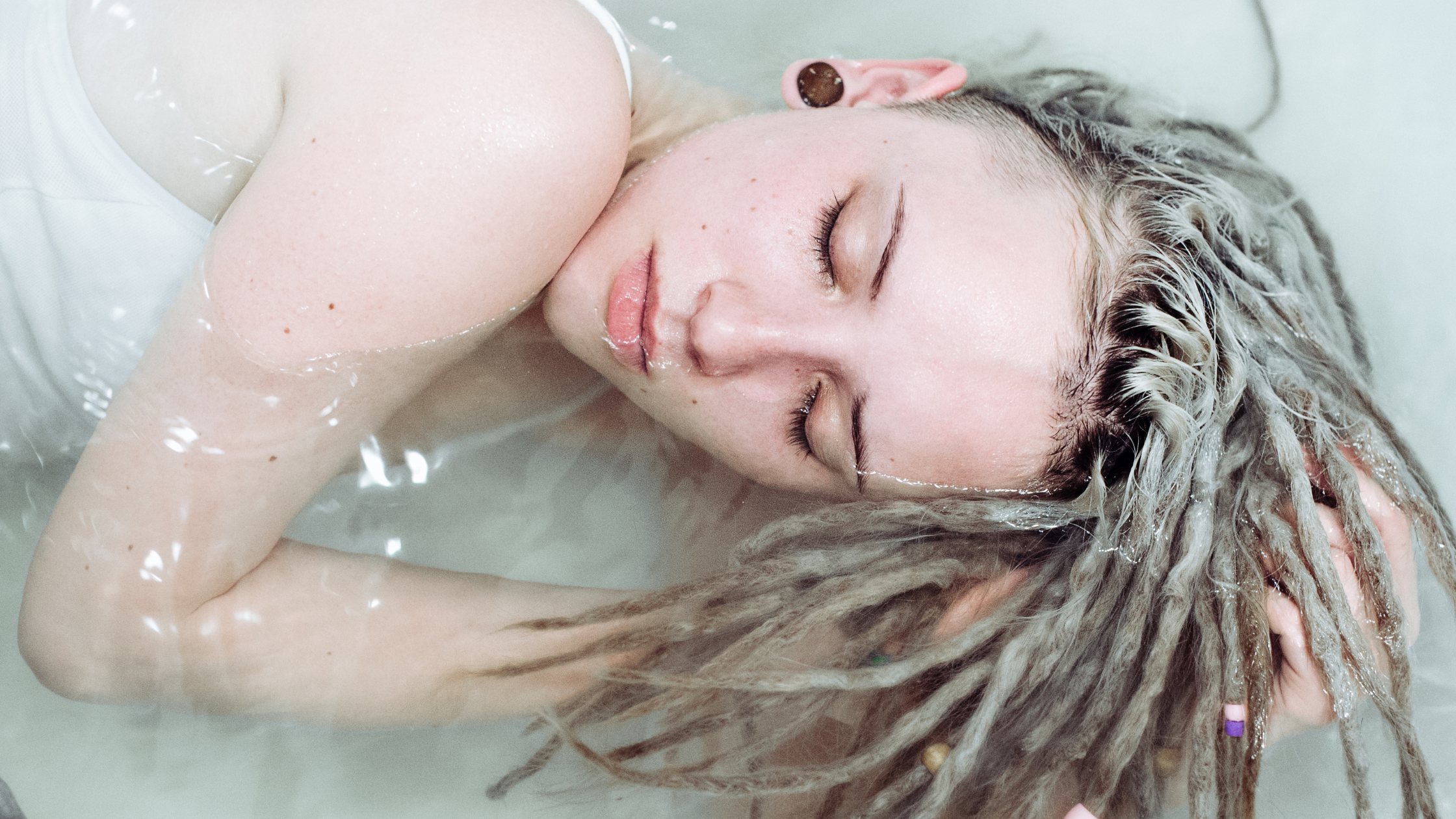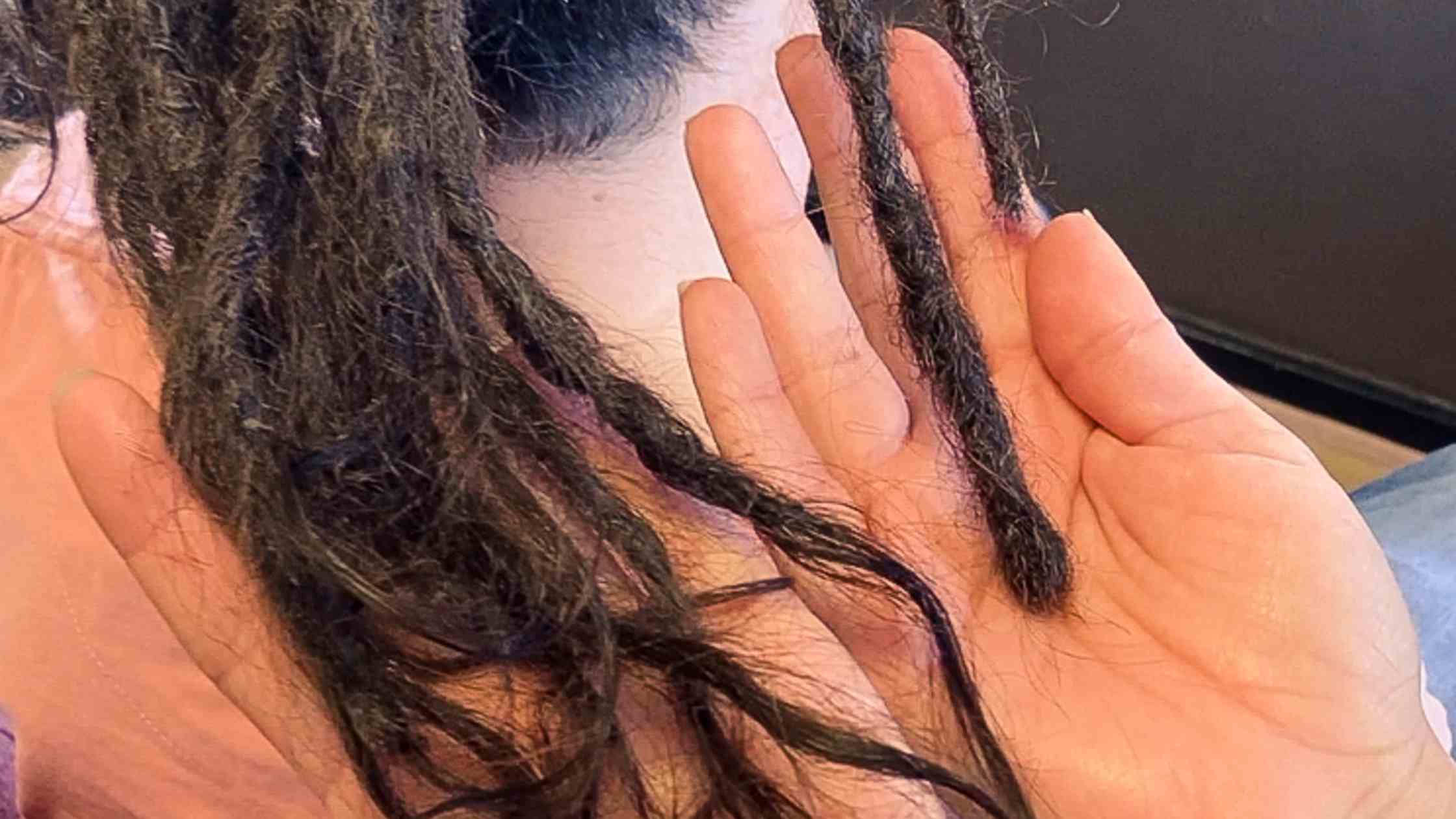The amount of maintenance depends on where in the process you and your dreadlocks are, read more about this in "The 4 phases". Like everything else in life, your dreadlocks initially need some care and maintenance. Over time, they demand less, but still need some attention.
Maintenance of new dreadlocks
You have just begun the journey with your "baby dreadlocks". They are still loose and have not progressed far in the ripening process. After a few days they will start to "fluff" and loose hair will stick out, so it's time to give them some love. They will, over the next while, start working on their own and naturally begin to contract, if you want straight and even dreadlocks, you have to be a little above them. You should roll them between your palms often, especially after washing your hair. When your dreads are brand new, we recommend that you shampoo approximately once a week, you can always rinse your hair with water. Just take the time to dry your dreads completely and then palm roll them.
When hair is wet it becomes very elastic, dreadlocks will shrink, become short and thick. This is also where bumps or loops can appear on the dreadlock. The most important technique in maintenance, through all phases is Palm Rolling.
What is Palm Rolling?
Palm Rolling, is used to help the new knots become dense and tight. It helps new, loose hairs to get tangled in the dreadlock.
When rolling dreadlocks, bumps and bumps are counteracted, most effectively after washing. If it has happened that your dreadlocks contract and have got these bumps, you can go a long way to get rid of them by rolling. This technique helps speed up the maturing process of your dreadlocks, helping them keep their shape and length.
To Palm rolling you take a dreadlock between your palms and roll back and forth as you roll, pressing your hands together.
A good tightening spray and gel will make the knots in your dreads compress and tighten up when you roll. It will give the hair some hold, so it is better persuaded to work in that direction and accelerate the process to mature dreadlocks.
If you prefer a more "messy" look, you don't need to roll your dreadlocks quite as much. However, it is still important that you roll them once in a while, but they must still be allowed to work. Here they will shrink quite a bit, so you have to be prepared for that, often they will also get minor bumps and dents. That's the whole charm!
The little flyaway "fluffy" hairs will come even if you roll your dreads. The loose hair must be continuously pulled back into the dreadlock. You can do this yourself by learning to use a crochet hook. You can also come into our studio and we will help you with a maintenance session.
Maintain Mature Dreadlocks
When your dreadlocks are about a year old, they can be called 'mature dreadlocks' and they will be firm and require less maintenance.
However, the hair grows, so the base must be maintained to get the new hair integrated into the dreadlock. There may also still be some loose hair down along your dreadlocks that needs to be pulled into your dreadlocks.
We recommend getting the base repaired every 3-6 months to keep them looking good and to separate the hair so the dreadlocks don't grow together at the scalp.
It is important to take care to separate your dreadlocks right down to the bottom, you do this by regularly pulling the dreadlocks apart, the loose hair wants to get into the neighboring dreadlock.
It is still important to pay attention to your scalp, whether it is healthy and to stimulate it with massage.
To tighten up the outgrowths at the dreadlocks, you can use Clockwise Rubbing.
What is Clockwise Rubbing?
With Clockwise Rubbing, you can make new knots right where they are needed, and keep loose hair to a minimum. When done right, Clockwise Rubbing is an easy and gentle method of maintaining ingrowths on your dreads and you only need to do it for a few minutes. It is 100% safe for your hair.
Before using the technique, your hair must be clean and free of grease, so it dreads up quickly and easily.
Here's how you do it:
Take a dreadlock at the root from about 6 cm - 1 cm from the scalp. Hold the dreadlock between your index and middle finger. Now gently make circles with the dreadlock at your scalp, leaving at least 3 cm free to form new knots. Rub the dreadlock clockwise in circles, you can change hands along the way - but remember to rub the same direction. Vary your grip and rub as you hold the dreadlock in different places.
Why clockwise?
Two reasons. You want to make sure you always do it in the same direction even if you switch hands. Clockwise is preferable to counter-clockwise because 80%-90% of the hair whorl patterns in your scalp are clockwise. Rubbing the hair around in this direction makes it work with the natural "pattern" rather than against it.
After less than a minute, you should have a small "ball" or tuft of tangled hair at the root. The point of this technique is to create a tangled tuft of hair – not a Dreadlock. It is important to note that a dreadlock is not born into the world. Over time, and with your help and palm rolling, these knots will compress, tighten and become indistinguishable from the rest of your dread. If no knots form within 30-40 seconds and nothing changes, you should adjust your grip. Try less pressure, etc. If knots still don't form, you'll need to make sure the hair is properly prepared for braiding. There are some products that can help this dreadlock process.

Lock Powder: If your hair has difficulty knotting, you can use Lock Powder to further increase friction and felting. You can shake some powder into a small pile or just press your fingertip into it. You don't need to get as much out as you can, but just enough to cover the surface of the tip of your finger. You will only need a small amount of powder. Extra Powder will not help, but will instead end up on your scalp, so try not to use more than what covers the surface of the tip of your finger. Once in the hair just rub clockwise as usual.

Tightening spray: Use tightening spray, it will help to give the loose hair texture and not leave residue in your dreadlocks.
When you have gone through the entire hair with this technique, roll to tighten. Here you can use a crochet hook if you want to see results immediately. Alternatively, if you continue with palm rolling over the next few weeks, the dreadlocks will also take shape and tighten up.

